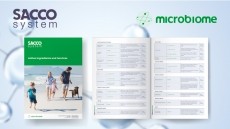ABEC breaks the 2,000L ‘plastic ceiling’ with 4,900L single-use bioreactor

Increased titres combined with a shift away from large-scale dosage demands have made single-use bioreactors a viable option for commercial biomanufacturing.
But the significant pressure from the increased weight of the liquid medium in larger volume bags, coupled with the significant learning curve for an end-user to manage, has meant “2,000L is really a ceiling for single-use bioreactor bags,” Eric Isberg from the trade association Bio-Process Systems Alliance (BPSA) told us in January.
Therefore it is no surprise the major vendors of disposable bioprocessing systems – Sartorius, Thermo Fisher, GE Healthcare, Pall and MilliporeSigma – all offer a maximum of 2,000L in their bioreactor ranges.
But one supplier, Bethlehem, Pennsylvania-headquartered ABEC has bucked the trend, and after launching a 4,300L bioreactor (with 3,500L of working volume) in 2015 is now upping the volume further, launching a single-use bioreactor with a production volume of 4,000L it says overcomes disposable systems’ limitations and performs comparably to stainless steel.
“The total volume is nominally 4,900L but it can be customised for the application, as can all other aspects of the system,” ABEC spokeswoman Susan Cooper-Curcio told Biopharma-Reporter.
She added the issue of increased pressure from a system bearing double the weight of cell culture and media is a “non-issue with simple support structures at the lower ports,” and furthermore the bioreactor would take up approximately the same floor space as a 2,000L unit.
This ability to redefine the process economics of single-use, as well as provide a much larger process window within a single-use bioreactor is driving “significant” demand for larger systems, she told us, as is the reduction in cost of goods where “dramatic reductions” are possible based on a drop in consumables, facility and operating costs using larger systems.
With such demand and cost benefits, we asked Cooper-Curcio why rival suppliers have stopped at the 2,000L limit:
“Other vendors have developed standardized designs in line with their legacy consumables businesses. These designs have relatively poor mixing and mass transfer performance, especially at the larger scales. Performance is already compromised at 2,000L, and their designs are not scalable larger than that.”
















